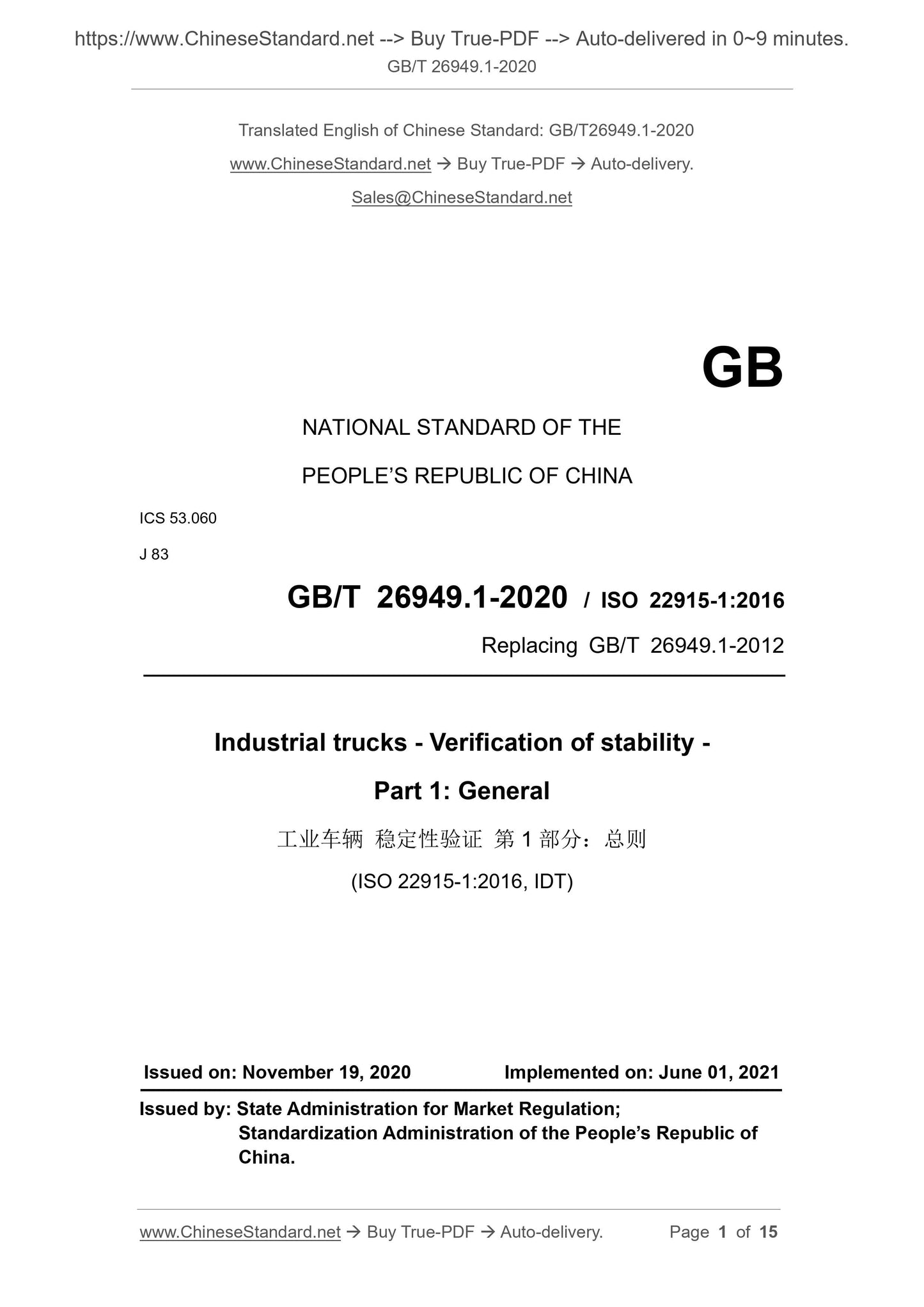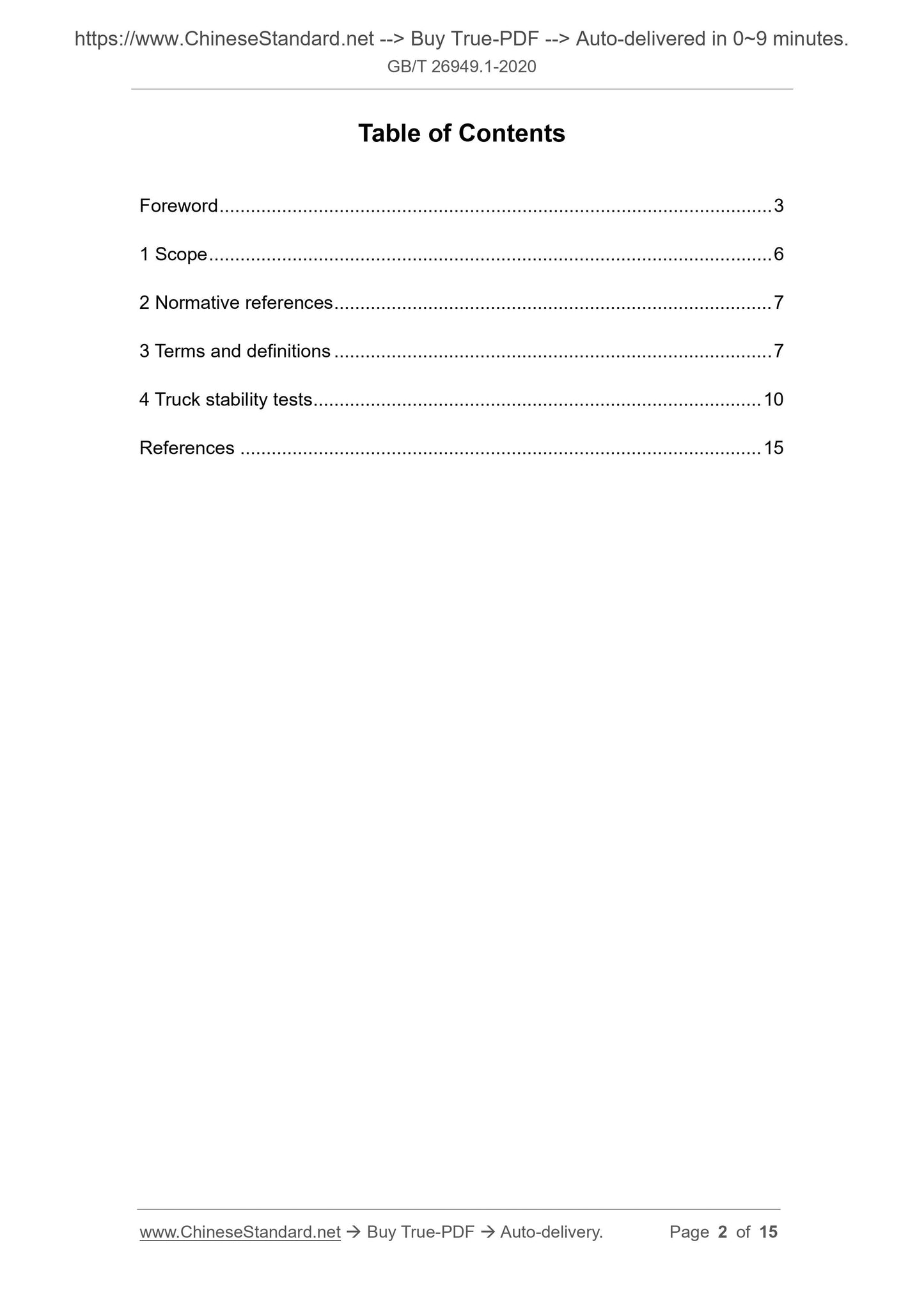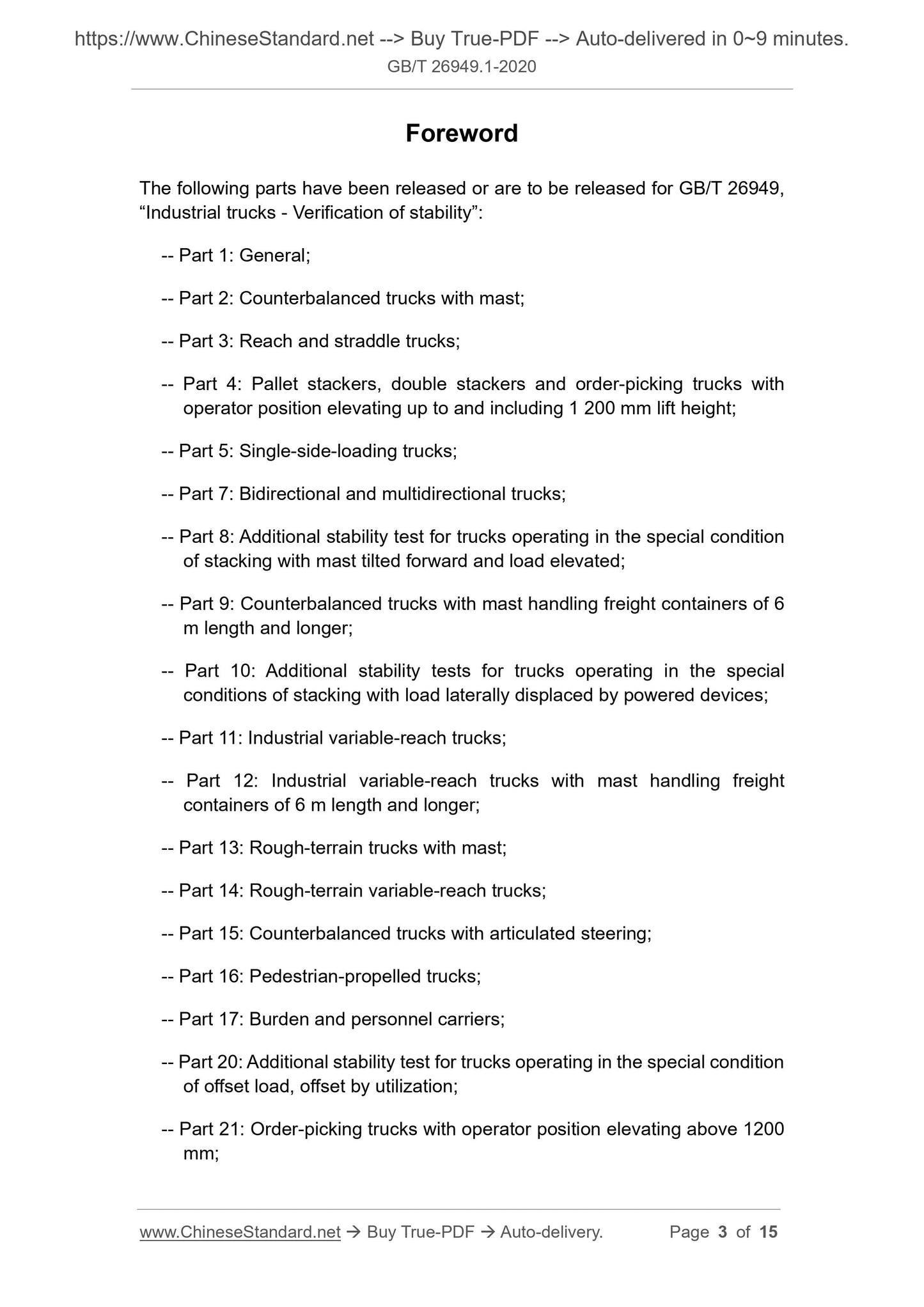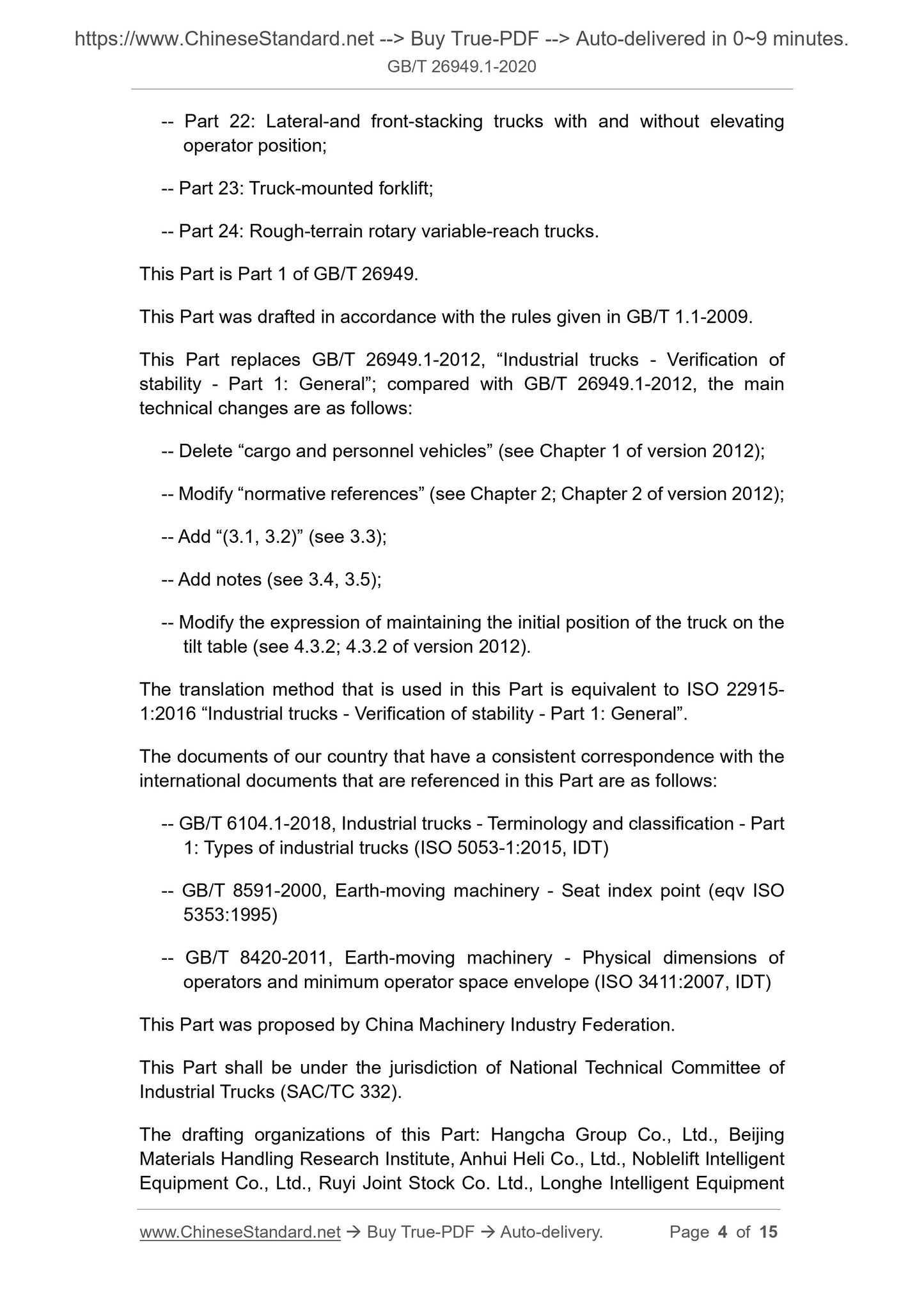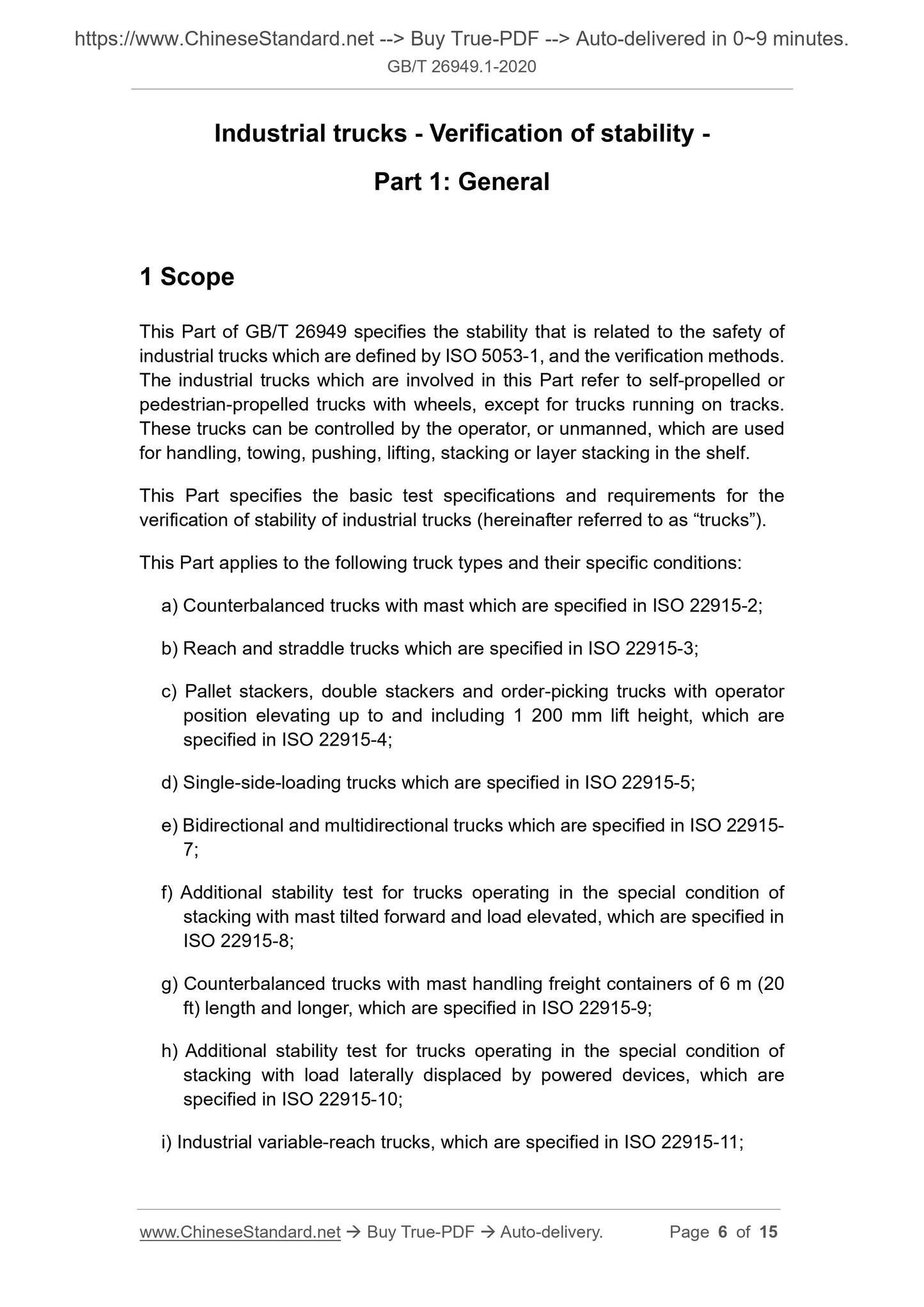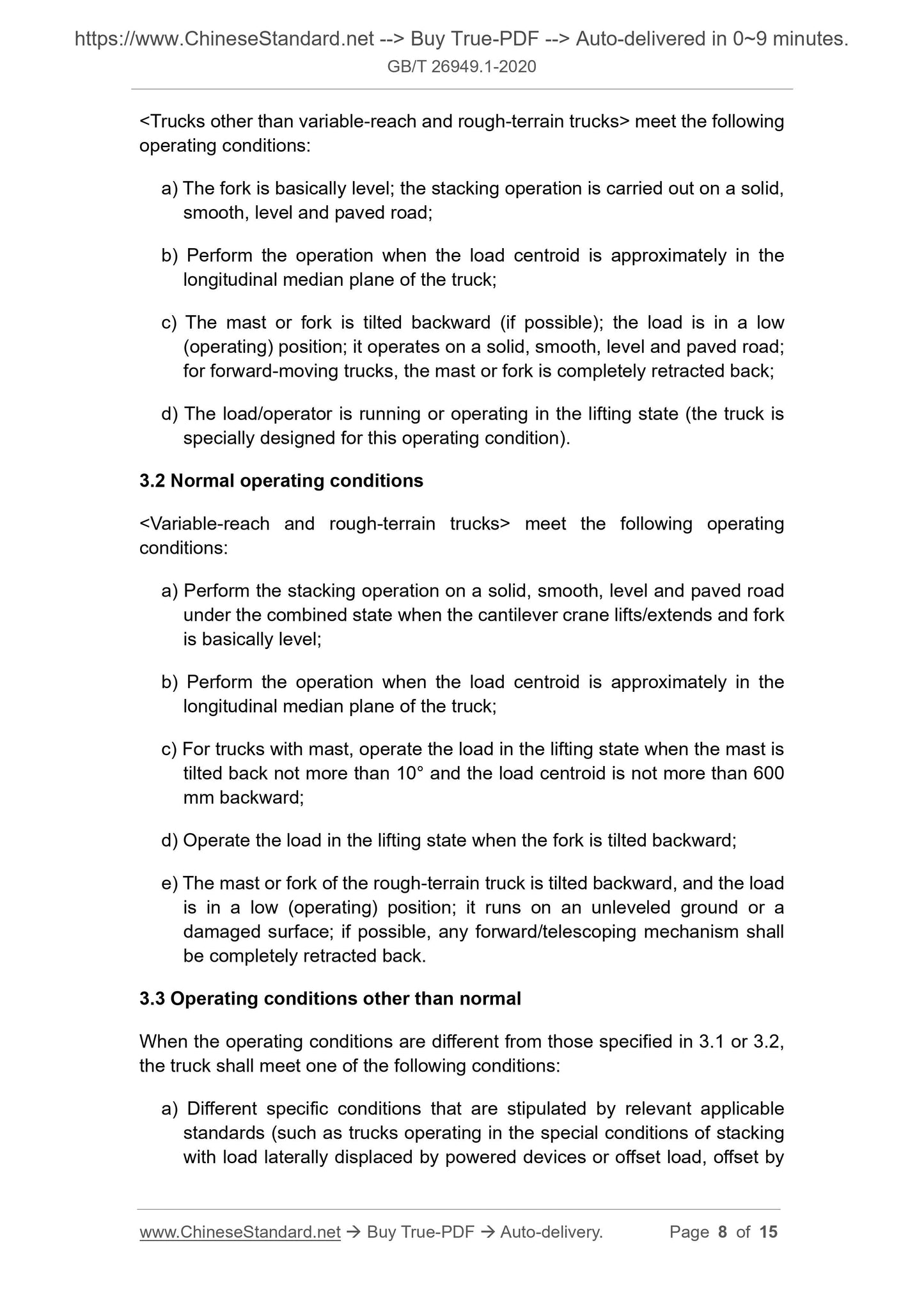1
/
of
6
www.ChineseStandard.us -- Field Test Asia Pte. Ltd.
GB/T 26949.1-2020 English PDF (GB/T26949.1-2020)
GB/T 26949.1-2020 English PDF (GB/T26949.1-2020)
Regular price
$170.00
Regular price
Sale price
$170.00
Unit price
/
per
Shipping calculated at checkout.
Couldn't load pickup availability
GB/T 26949.1-2020: Industrial trucks - Verification of stability - Part 1: General
Delivery: 9 seconds. Download (and Email) true-PDF + Invoice.Get Quotation: Click GB/T 26949.1-2020 (Self-service in 1-minute)
Newer / historical versions: GB/T 26949.1-2020
Preview True-PDF
Scope
This Part of GB/T 26949 specifies the stability that is related to the safety ofindustrial trucks which are defined by ISO 5053-1, and the verification methods.
The industrial trucks which are involved in this Part refer to self-propelled or
pedestrian-propelled trucks with wheels, except for trucks running on tracks.
These trucks can be controlled by the operator, or unmanned, which are used
for handling, towing, pushing, lifting, stacking or layer stacking in the shelf.
This Part specifies the basic test specifications and requirements for the
verification of stability of industrial trucks (hereinafter referred to as “trucks”).
This Part applies to the following truck types and their specific conditions:
a) Counterbalanced trucks with mast which are specified in ISO 22915-2;
b) Reach and straddle trucks which are specified in ISO 22915-3;
c) Pallet stackers, double stackers and order-picking trucks with operator
position elevating up to and including 1 200 mm lift height, which are
specified in ISO 22915-4;
d) Single-side-loading trucks which are specified in ISO 22915-5;
e) Bidirectional and multidirectional trucks which are specified in ISO 22915-
7;
f) Additional stability test for trucks operating in the special condition of
stacking with mast tilted forward and load elevated, which are specified in
ISO 22915-8;
g) Counterbalanced trucks with mast handling freight containers of 6 m (20
ft) length and longer, which are specified in ISO 22915-9;
h) Additional stability test for trucks operating in the special condition of
stacking with load laterally displaced by powered devices, which are
specified in ISO 22915-10;
i) Industrial variable-reach trucks, which are specified in ISO 22915-11;
< Trucks other than variable-reach and rough-terrain trucks> meet the following
operating conditions:
a) The fork is basically level; the stacking operation is carried out on a solid,
smooth, level and paved road;
b) Perform the operation when the load centroid is approximately in the
longitudinal median plane of the truck;
c) The mast or fork is tilted backward (if possible); the load is in a low
(operating) position; it operates on a solid, smooth, level and paved road;
for forward-moving trucks, the mast or fork is completely retracted back;
d) The load/operator is running or operating in the lifting state (the truck is
specially designed for this operating condition).
3.2 Normal operating conditions
< Variable-reach and rough-terrain trucks> meet the following operating
conditions:
a) Perform the stacking operation on a solid, smooth, level and paved road
under the combined state when the cantilever crane lifts/extends and fork
is basically level;
b) Perform the operation when the load centroid is approximately in the
longitudinal median plane of the truck;
c) For trucks with mast, operate the load in the lifting state when the mast is
tilted back not more than 10° and the load centroid is not more than 600
mm backward;
d) Operate the load in the lifting state when the fork is tilted backward;
e) The mast or fork of the rough-terrain truck is tilted backward, and the load
is in a low (operating) position; it runs on an unleveled ground or a
damaged surface; if possible, any forward/telescoping mechanism shall
be completely retracted back.
3.3 Operating conditions other than normal
When the operating conditions are different from those specified in 3.1 or 3.2,
the truck shall meet one of the following conditions:
a) Different specific conditions that are stipulated by relevant applicable
standards (such as trucks operating in the special conditions of stacking
with load laterally displaced by powered devices or offset load, offset by
Basic Data
| Standard ID | GB/T 26949.1-2020 (GB/T26949.1-2020) |
| Description (Translated English) | Industrial trucks - Verification of stability - Part 1: General |
| Sector / Industry | National Standard (Recommended) |
| Classification of Chinese Standard | J83 |
| Classification of International Standard | 53.060 |
| Word Count Estimation | 10,172 |
| Date of Issue | 2020-11-19 |
| Date of Implementation | 2021-06-01 |
| Older Standard (superseded by this standard) | GB/T 26949.1-2012 |
| Regulation (derived from) | National Standard Announcement No. 26 of 2020 |
| Issuing agency(ies) | State Administration for Market Regulation, China National Standardization Administration |
Share
